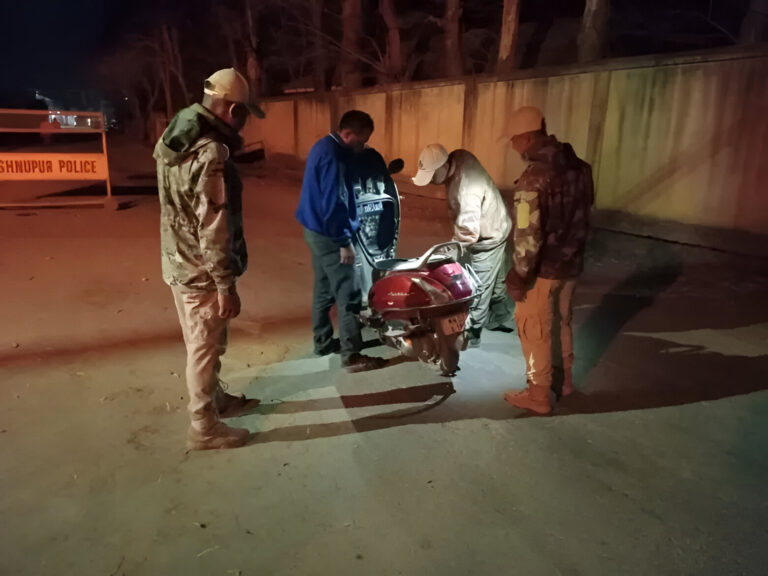Scientist to Tag Satellite Transmitters on Amur Falcons in Manipur’s Tamenglong District
Summary
In a significant development for wildlife conservation, researchers are gearing up to tag satellite transmitters on Amur falcons in Manipur’s Tamenglong district. These migratory birds are known for their incredible journey from Siberia to Africa. This initiative aims to track their migratory patterns and understand the challenges they face along the way. By utilizing advanced technology, scientists hope to gather crucial data that can contribute to the protection of these magnificent creatures and their habitats.
The Full Article: Understanding the Amur Falcon Initiative
Introduction: Why Amur Falcons Matter
Have you ever wondered how far some birds travel in their lifetime? Well, the Amur falcon is one of nature’s true globetrotters! These small raptors are known for their astonishing migratory journey, which spans thousands of kilometers from Siberia to Southern Africa. Imagine flying from one continent to another just to find a warmer climate and abundant food. It’s almost like the ultimate vacation!
In Manipur, India, particularly in the Tamenglong district, scientists are embarking on a fascinating project to tag these amazing birds with satellite transmitters. This initiative is not just about adding some high-tech gadgets to the falcons; it’s about understanding their migration patterns and the various challenges they encounter along their journey. So, let’s dive deeper into what this project entails and why it’s essential for both the Amur falcon and the ecosystem.
What Makes the Amur Falcon Special?
The Amur falcon (Falco amurensis) is a small, sleek bird of prey that showcases stunning plumage. With its dark wings and pale underparts, it’s both beautiful and agile. These birds are unique not just because of their looks, but also their behavior. They are known for their incredible endurance and remarkable navigation skills, which allow them to travel thousands of miles without losing their way.
These falcons play a crucial role in the ecosystem. As predators, they help maintain the balance in the food chain by controlling the population of small rodents and insects. Their migratory habits also make them key indicators of environmental health. Changes in their migration patterns can signal shifts in climate or habitat quality.
The Journey of the Amur Falcon
So, how do these birds make such a long journey? Well, Amur falcons embark on their migration in the fall, leaving their breeding grounds in Siberia. They fly south, often covering more than 20,000 kilometers to reach their wintering grounds in Southern Africa. This trek is not only a test of endurance but also a risky adventure, as they face various threats along the way.
From extreme weather conditions to habitat destruction, the obstacles are plentiful. Moreover, many of these birds are at risk of being hunted during their stopovers. It’s essential to monitor their migratory routes to identify critical habitats that need protection.
The Role of Technology in Conservation
This is where the exciting part comes in—technology! The initiative to tag the Amur falcons with satellite transmitters will provide invaluable insights into their migratory patterns. But how does it work? Well, researchers will attach small, lightweight transmitters to the birds before they embark on their migration. These devices will send data back to scientists, helping them track where the falcons go, how long they stay in specific areas, and what challenges they face.
Imagine being able to follow the journey of a bird in real-time. It’s like having a front-row seat to nature’s most incredible show! With this data, conservationists can pinpoint vital stopover sites, identify threats, and develop strategies to protect these magnificent birds and their habitats.
The Importance of Tamenglong District
Why is Tamenglong district significant for this initiative? This region is known for its rich biodiversity and serves as an important habitat for many migratory birds. It’s a critical stopover point for the Amur falcon as they journey south. The local ecosystem provides food and resting areas, making it a prime location for researchers to study these birds.
Moreover, engaging local communities in this conservation effort can foster a sense of responsibility towards protecting wildlife. By raising awareness about the Amur falcon and its migratory habits, residents can become stewards of their environment, contributing to the long-term success of this initiative.
Challenges Faced by the Amur Falcon
While the project holds great promise, it’s not without challenges. One of the biggest concerns is habitat loss due to human activities such as deforestation and urbanization. As natural habitats are destroyed, the available resources for migratory birds diminish, making their journeys even more perilous.
Another significant threat is poaching. During their migration, many falcons are hunted, often for food or sport. This not only reduces their population but also disrupts the delicate balance of the ecosystem.
The Community’s Role in Conservation
For this initiative to succeed, it’s vital to involve local communities. Educating residents about the importance of the Amur falcon and the role it plays in the ecosystem can cultivate a culture of conservation. Workshops, school programs, and community events can help raise awareness and encourage local participation in protecting these birds.
Imagine if every person in the community took an interest in watching out for the Amur falcon. The impact could be tremendous! Community members can become citizen scientists, reporting sightings and contributing to data collection.
Conclusion: A Brighter Future for Amur Falcons
The initiative to tag Amur falcons with satellite transmitters in Manipur’s Tamenglong district is a significant step forward in avian conservation. By understanding their migratory patterns and addressing the challenges they face, scientists can work towards safeguarding these incredible birds.
This project highlights the importance of integrating technology with community involvement in conservation efforts. As we continue to learn more about these fascinating creatures, we pave the way for a future where humans and wildlife can coexist harmoniously. After all, isn’t it our responsibility to protect the wonders of nature for generations to come?
FAQs
- What is the Amur falcon known for?
The Amur falcon is known for its remarkable migratory journey from Siberia to Southern Africa, covering thousands of kilometers. - Why is tagging falcons with satellite transmitters important?
Tagging allows scientists to track migratory patterns, understand challenges, and develop conservation strategies for the species. - What are the main threats to the Amur falcon?
Key threats include habitat loss due to urbanization, deforestation, and hunting during migration. - How can local communities contribute to conservation efforts?
Communities can engage in awareness programs, monitor bird populations, and support habitat preservation initiatives. - What role do Amur falcons play in their ecosystem?
Amur falcons help control the population of small rodents and insects, maintaining a balanced food chain.



